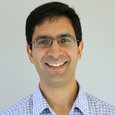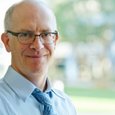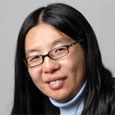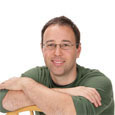New Directions in the Science of Information
November 4th, 2013
UC Berkeley, CA
Last Updated Thu February 13, 2014 9:44 AM EDT
Join Center faculty and students from UC Berkeley and Stanford for a day of distinguished speakers and a research poster session as we explore "New Directions in the Science of Information." Sponsored by the Center for Science of Information, NSF Science and Technology Center.
The event will be held in the Kinzie Room of the David Brower Center, 2150 Allston Way, Berkeley, CA and starts promptly at 9:00 a.m. PDT. Lunch will be served.
Stanford University participants: a shuttle bus has been chartered for travel to/from the event, please see Directions/Map
REGISTRATION IS CLOSED; MAXIMUM OCCUPANCY REACHED.
Students from CSoI and affiliate universities are invited to present at the student poster session. Please use the links below to register and upload posters.
Information for Presenters:- Uploading your poster is optional. If you don't upload your poster you can still bring your poster the day of the event.
- Foam boards and stands will be provided, and can accommodate posters up to 36" x 48".
- There are CSoI poster templates available online at http://soihub.org/resources.php?id=128.
- Students should print their own posters in advance
- Please register your attendance for the poster session using the form below by Oct. 31, 2013
- Prizes for posters will be awarded: $100 - first prize and two $50- second prizes
"De novo Genome Assembly with Noisy Reads: From Information Theory to a Prototype Assembler"; Ka-Kit Lam, Asif Khalak, David Tse;
and second place winners:
"Functional cross-subject mapping predicts brain activity to novel natural movies and speech"; Natalia Y. Bilenko, Alexander G. Huth, Shinji Nishimoto, Jack L. Gallant;
and
"Efficient similarity queries via lossy compression"; Idoia Ochoa, Amir Ingber, Tsachy Weissman;
Agenda
| Time (PDT) | Event | |
|---|---|---|
| 09:00 am - 09:35 am | Welcoming Remarks | |
09:35 am - 10:15 am |
Lior Pachter, UC Berkeley |
|
10:30 am - 11:10 am |
Michael Luby, VP Technology, Qualcomm Inc. - Media Delivery — A Personal Perspective I will describe some work that I have been involved with over the years that is focused on media delivery and media streaming. The presentation in particular overviews the RaptorQ (IETF RFC 6330) and MPEG-DASH (ISO/IEC 23009) technologies, and describes how these technologies have been and could be used in commercial deployments. No specialized background is necessary for this presentation. |
|
| 11:10 am - 11:25 am | Break | |
11:25 am - 12:05 pm |
Bin Yu, Departments of Statistics and EECS, UC Berkeley - Modeling Visual Cortex V4 in Naturalistic Conditions with Invariant and Sparse Image Representations The functional organization of cortex area V4 in the mammalian ventral visual pathway is far from being well understood. V4 plays an important role in the recognition of shapes and objects and in visual attention, but its complexity makes it hard to analyze. In particular, no current model of V4 has shown good predictions for neuronal responses to natural images and there is no consensus on its primary role. In this talk, we present analysis of electrophysiological data on V4 neuron responses to natural images. We propose a new computational model that achieves comparable prediction for V4 as for V1 neurons. Our model does not rely on any pre-defined image features but only on invariance and sparse coding principles. We interpret our model using sparse principal component analysis and discover two groups of neurons: those selective to texture versus those selective to contours. This supports the thesis that one primary role of V4 is to extract objects from background in the visual field. Moreover, our study also confirms the diversity of V4 neurons. Among those selective to contours, some of them are selective to orientation, others to acute curvature features. (This is joint work with the Gallant Lab and with co-authors Mairal, Benjamini, Oliver, Willmore, and Gallant). |
|
| 12:05 pm - 1:20 pm | Lunch | |
01:20 pm - 02:00 pm |
Tsachy Weissman, Department of Electrical Engineering, Stanford University - Compression for Similarity Queries I will talk about compression when the goal is to concisely represent sequences in a way that allows to determine whether they are similar to a given query sequence. The problem arises in an increasing variety of contexts from genomics to forensics to internet search. We characterize achievable tradeoffs between conciseness of the representation, similarity level, and reliability of the answers to the queries, with particular focus on the practically motivated case where false negatives (misdetections) are not allowed. Guided by the theoretical findings, we construct and experiment with practical compressors for queries. The performance of these schemes is seen to approach the theoretical limits on simulated and real data. Connections to existing literature and future directions will be discussed. Based on collaborations with Thomas Courtade, Amir Ingber, Idoia Ochoa and Golan Yona. |
|
| 02:00 pm - 02:15 pm | Break | |
02:15 pm - 04:00 pm |
Poster Session Poster winners were announced. See above. |
|
Stanford Participants:
A bus has been chartered to take you to/from the event Nov. 4th, 2013 (all times PDT):DEPART
Pick-up at Stanford (350 Serra Mall) at 7am
Drop off Time at Berkeley (2150 Allston Way) at 8:45am
RETURN
Pick-up at Berkeley (2150 Allston Way) at 4:15pm
Drop off at Stanford (350 Serra Mall) approximately at 6pm

The David Brower Center, 2150 Allston Way, Berkeley, CA 94704
Map data © 2013 Google
Organizing Contacts:
- Venkat Anantharam, UC Berkeley
- Bin Yu, UC Berkeley
- Kim Kail, UC Berkeley
- Andrea Goldsmith, Stanford
- Tsachy Weismann, Stanford
- Thomas Courtade, Center for Science of Information
- Bob Brown, Center for Science of Information
- Mike Atwell, Center for Science of Information
- Kiya Smith, Center for Science of Information
About the Center for Science of Information
At the Center for Science of Information, our mission is to advance
science and technology through a new quantitative understanding of the
representation, communication, and processing of information in
biological, physical, social, and engineered systems. For more details
visit http://www.soihub.org
Phone: (765) 494-2908
 View The Rest of The Prestige Lecture Series
View The Rest of The Prestige Lecture Series

